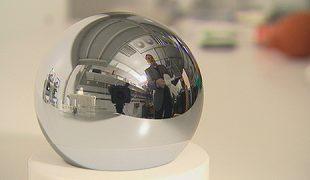The original kilogram
 21.400.000.000.000.000.000.000.000 atoms for one kilo. 21.400.000.000.000.000.000.000.000 atoms for one kilo.
Physicists intend to replace the prototype kilo from Sèvres by a silicium ball.
Scientists intend to replace the prototype kilo, which is the basis for the unit of measurement by a silicium ball, as the prototpye for all calibrated kilo weights of all countries in the world is losing minimal but measurably weight. Therefore the physicists of the Physical-Technical Federal Institut of Germany plan to define newly the quantity of atoms of a silicium ball. As the silicium atoms are placed fix in a cristalline structure their number can be counted exactly.
For that purpose the ball will be laser gauged on 1.6 million points in a climatic chamber by exactly 20° Celsius – roughness exists only in particular atoms. If this ball had the size of the earth the dicrepancies were only 1.7 meter high.
However, sometimes different atoms creep in the ultrapure silicium and adulterate the result. Thus, the measurement is exactly by ‚only’ seven positions after decimal point. The scientists want to eliminate this error in measurement by a more pure silicium to approach to the theoretical value: 2,14 mal 10 shall be in the ball. The advantage of this strict definition is that it may never change. The scientists will achieve the last decimal place of accuracy with a ball of more pure silicium.
In Sèvres near Paris, a cylinder of a platinum-iridium-alloy lies in a safe of the International Bureau for Measurement and Weight. Every country has a copy of the prototype kilo for the calibration of their scales. While all vary to each other especially the original from Paris suffer a inexplicable shrinking.
|